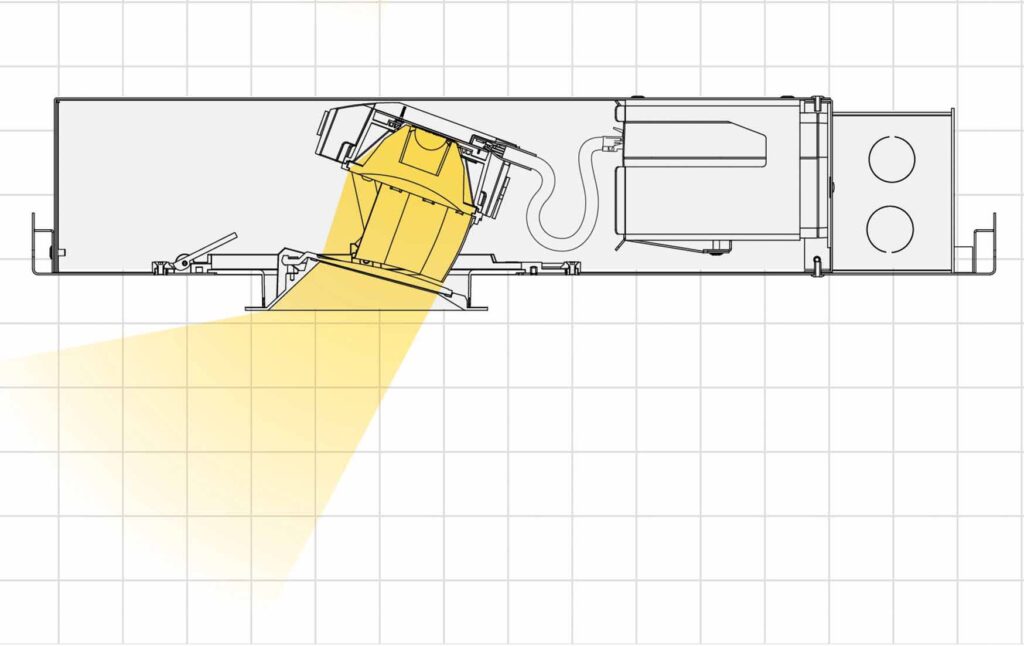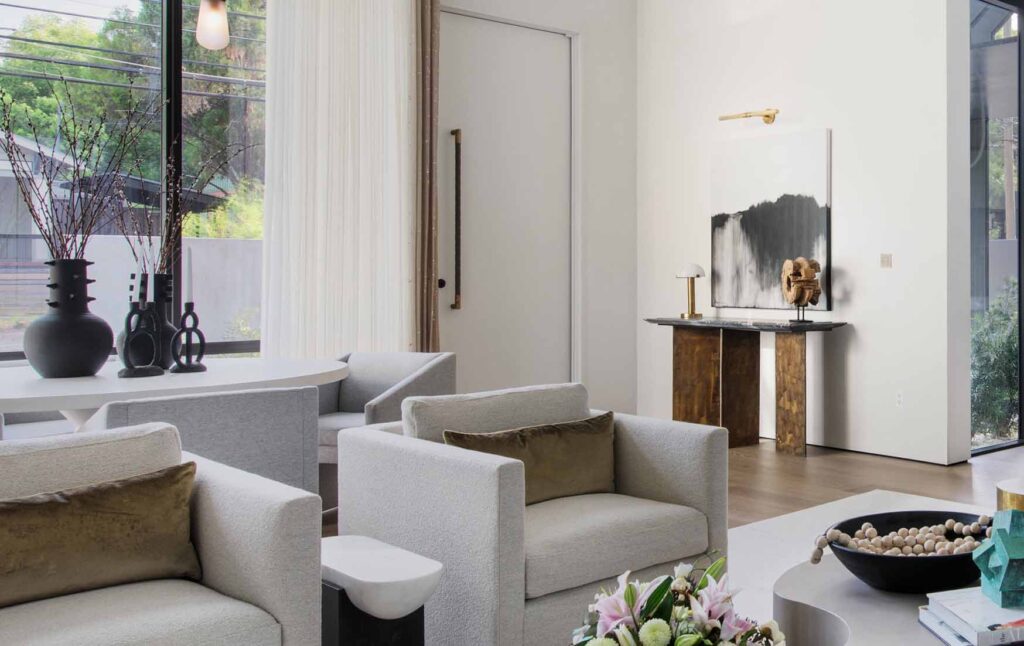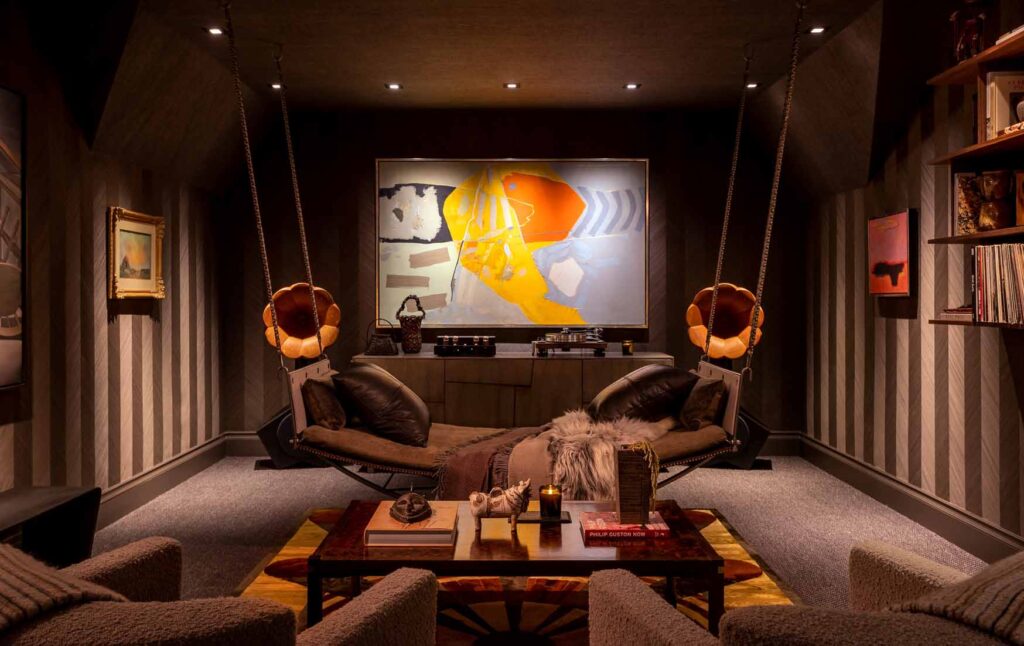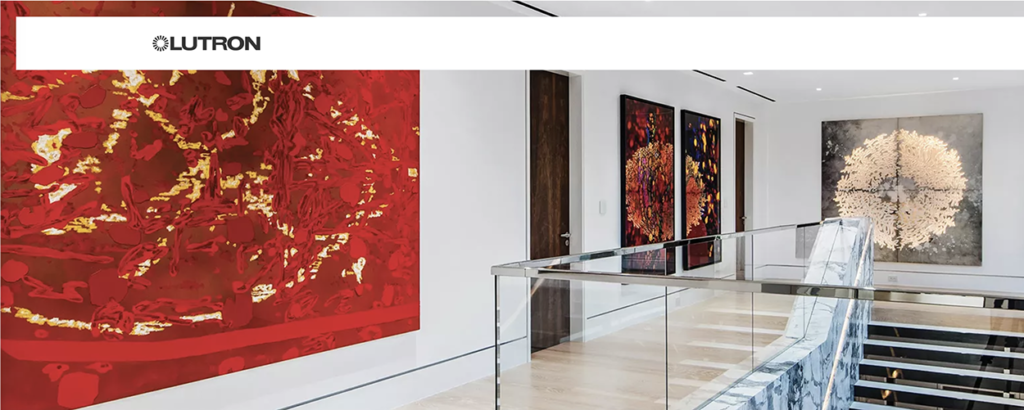For all the effort and resources that goes into curating a personal art collection, it’s imperative that the final result is museum-worthy. Proper lighting can achieve this. By using the right fixtures, light quality, and techniques, design professionals can enhance clients’ artwork, while protecting them from long-term damage.
Techniques for Lighting Artwork
Wall Washing
The wall-washing technique allows designers to illuminate the entire wall surface with an even quantity of light. It creates a neutral context for the featured art. Because the wall is evenly lit, this method allows collectors to switch the artworks on display without changing the light.
Recessed lights, surface-mounted lights, and track lights can all act as wall washers if specified with the proper lensing/optics. In order to get an even wash of light on a wall, special attention needs to be paid to the spacing between light sources and the distance offset from the wall. The optimal parameters for a given light source can be found on a manufacturer’s specification sheet.
The wall-washing effect is most similar to ambient natural daylight. In the past, wall washers could look overly bright and cold at night. However, with Ketra’s natural light technology, one can lower light intensity and warm color temperatures to soften the light at the end of the day.

Picture Lights
Perhaps the most traditional technique, picture lights are wall-mounted fixtures that light individual pieces of art. “People usually use picture lights as an aesthetic choice,” Ramos says. “The fixtures can add to the overall design of the space.” Since they’re mounted close to the artwork, picture lights lend a more intimate viewing experience.

Downlights
The downlight category includes recessed lights and ceiling-mounted spotlights, which are aimed to highlight a specific piece of art. When using downlights, the light source should be tilted at a 30-degree angle to avoid glare (for pieces behind glass) and accentuate the artwork. “By using this rule, you’re able to pick up on just the right amount of texture and subtly enhance the shadows and highlights,” says Alex Miller, partner of luxury lighting design firm TM Light.
To use the 30-degree angle rule, the fixture must be able to tilt. For recessed lights, Ketra’s D3 Downlights offer 364 degrees of rotation and 40 degrees of tilt. Their LED lamps can also be screwed into aimable, surface-mounted fixtures.

Track Lights
Museums frequently select track lights for their flexibility. “Because they’re typical in museums, we often see track lighting used in homes with large art collections and galleries,” Ramos says. With track lights, collectors can frequently rotate the items on display since the lights can be adjusted easily. Moreover, track lights can be used to create either a spotlight or wall-washing effect depending on the optics and lenses chosen.

Original article from luxury.lutron.com
